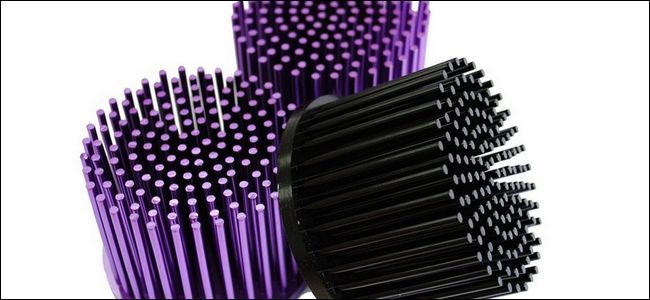When it comes to the pursuit of true geekdom, there's no question too arcane. Today we take a look at whether or not the color of a heat sink matters (and if the performance hit or bonus is even worth considering).
Today’s Question & Answer session comes to us courtesy of SuperUser—a subdivision of Stack Exchange, a community-driven grouping of Q&A web sites.
The Question
SuperUser reader Bob Freaking wants to know if the color of his heatsink matters:
I know that heatsinks come in different fin forms and those different fin forms affect the way how they dissipate heat. However, there's something I could not get about them and it's their color.
Can someone explain how does color affect a heatsink when it comes into dissipating heat? Complex explanations are welcome because I'm really curious about this particular matter.
Bob knows what he wants and what he wants is detailed analysis.
The Answer
SuperUser contributor Journeyman Geek delves into Bob's inquiry:
I suspect its unlikely, though it depends on what you mean by colour. There are three fundamental modes of heat transfer for any material, and only one of them is directly affected by colour.
Heat is transferred from the heat source to the heat sink, and from the heat sink to the air by conduction. Most heatsinks are made of copper (heavy, and relatively expensive) or aluminium - and copper is generally left natural, and aluminum either has a natural clear covering of AL2O3, or is anodised and coloured. For conduction material rather than colour is important.
Convection is the movement of heat through the movement of air. While passive cooling simply uses this, you can increase its efficiency by increasing surface area (which is why heatsinks are finned), or by forced convection - blowing air to carry heat away. While air is not a good conductor, convection in air is how everything from cars to heatsinks are cooled. This is very efficient, and dosen't really rely on the material properties of the heatsink, or on the colour.
Radiation is.. frankly awful at transferring heat unless you're in a vacuum(It also sucks in a vacuum, but conduction and convection cannot happen). It is affected by surface colour.
Practically speaking, a heatsink being coloured is entirely for looks, and will affect cooling less than surface area, airflow, material and the contact between the heat source and heat sink.
Case modders and PC building enthusiasts everywhere can rest easy knowing that their custom-colored heat sinks aren't impairing thermal transfer.
Have something to add to the explanation? Sound off in the the comments. Want to read more answers from other tech-savvy Stack Exchange users? Check out the full discussion thread here.

